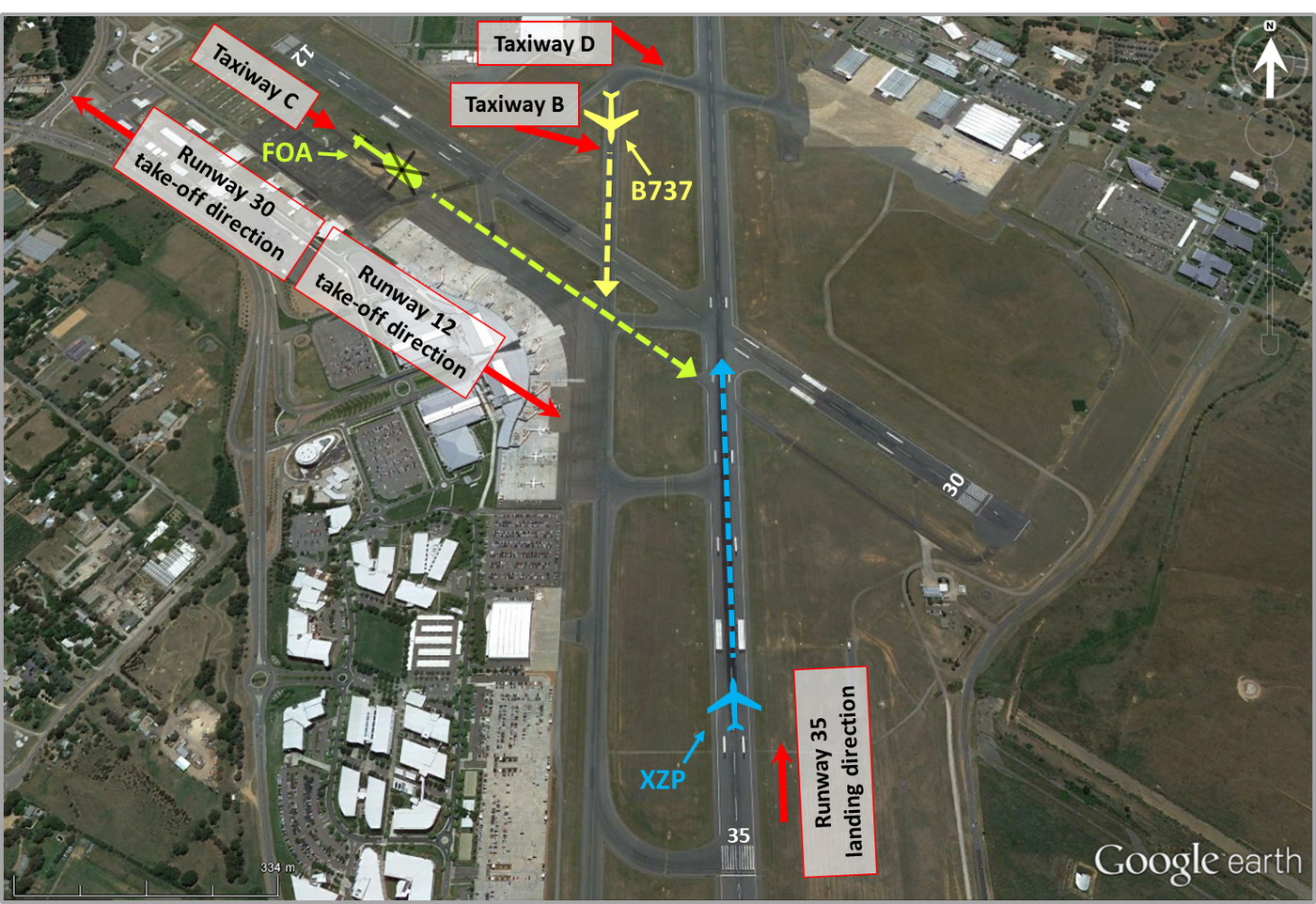
ASN Wikibase Occurrence # 207813
This information is added by users of ASN. Neither ASN nor the Flight Safety Foundation are responsible for the completeness or correctness of this information.
If you feel this information is incomplete or incorrect, you can submit corrected information.
| Date: | Friday 2 June 2017 |
| Time: | 07:51 LT |
| Type: |  Robinson R44 II |
| Owner/operator: | Secure Aviation |
| Registration: | VH-FOA |
| MSN: | 12569 |
| Year of manufacture: | 2008 |
| Fatalities: | Fatalities: 0 / Occupants: 2 |
| Aircraft damage: | None |
| Category: | Incident |
| Location: | Canberra Airport, ACT (CBR/YSCB) -
 Australia Australia
|
| Phase: | Take off |
| Nature: | Training |
| Departure airport: | Canberra Airport, ACT (CBR/YSCB) |
| Canberra Airport, ACT (CBR/YSCB) | |
| Investigating agency: | ATSB |
| Confidence Rating: |
A Robinson R44 II helicopter, registered VH-FOA (FOA) commenced taxiing at Canberra Airport, Australia, in prepation for a training flight in the circuit area. A student pilot and instructor were on board the helicopter. The crew of FOA planned to conduct circuit operations on the eastern grass parallel to runway 12/30.
Canberra Airport was a controlled airport and classified as Class C airspace. Air traffic control (ATC) was providing an aerodrome control service from the Canberra tower. There were two controllers in the tower: a surface movement controller (SMC) and an aerodrome controller (ADC).
The SMC issued a taxi clearance for FOA to taxi from the general aviation apron to taxiway C. The SMC also advised FOA’s crew to expect to depart from taxiway C in the runway 30 direction.
At about 07:49, the SMC cleared a recently landed Boeing 737 (B737) on taxiway B to cross runway 30 southwards.
At about 07:50, the ADC cleared a Boeing 737-838, registered VH-XZP (XZP), to land on runway 35. The aircraft was a scheduled passenger flight from Melbourne, Victoria. At this time, FOA’s crew were on the surface movement control frequency, hence unaware of XZP’s landing clearance.
Shortly after, FOA was lined up on taxiway C in the runway 30 direction and the student pilot informed the ADC that it was ready for departure. The taxiing B737 was still on taxiway B and on the surface movement control frequency, and XZP was about to land.
The ADC sighted FOA before issuing a take-off clearance to depart parallel to runway 12 and to maintain the runway heading. The student pilot read back this instruction to depart parallel to runway 12 and then realigned FOA in that take-off 12 direction. The student and instructor checked the airport windsocks – there was no downwind component in the take-off direction. Soon after, FOA began departing along taxiway C in the runway 12 direction.
After issuing FOA with a take-off clearance, the ADC initiated coordination with the approach controller (located at the ATC Melbourne centre) about a potential change of the duty runway from runway 35 to 17. This coordination became his priority as he needed to issue clearances to arriving aircraft that would use the changed runway. While conducting the coordination, the ADC was also assessing the weather conditions to the north of the airport, and scanning runway 35 prior to XZP crossing the threshold. His focus remained on those tasks – he did not observe FOA departing.
Both the instructor and student pilot of the departing FOA sighted the taxiing B737 to the left of the helicopter on taxiway B. The instructor was surprised ATC had not provided any information about the taxiing B737. The helicopter was about 200 ft above ground level (AGL), and in order to avoid overflying the taxiing aircraft that had started to cross taxiway C, FOA was manoeuvred slightly to the right of taxiway C’s centreline. After passing taxiway B and the B737, FOA returned to the centreline of taxiway C and continued on the cleared departure path.
Initially, the airport terminal buildings obscured the view that FOA’s crew had of the approach to runway 35. Once runway 35 came into view, and before crossing the runway, the crew looked to ensure there was no conflicting traffic. They then saw XZP touch down on the runway ahead of the helicopter.
At about 07:51, the instructor informed the ADC of the proximity event FOA had had with XZP. The ADC then realised that FOA was departing in a different direction to what he had intended. He instructed FOA to maintain runway heading and issued it a wake turbulence caution. Then, at about 07:53, he instructed FOA to track for the eastern grass before acknowledging that an incorrect take-off clearance instruction had been issued.
The helicopter and XZP continued their operations without further incident.
Findings:
The aerodrome controller (ADC) made an error when issuing the take-off clearance to VH‑FOA. He instructed the helicopter to depart parallel to runway 12, in the opposite direction to his intended instruction of departing parallel to runway 30.
The ADC became preoccupied with runway coordination tasks immediately after issuing the incorrect take-off clearance and, hence, did not detect the error.
The ADC had not taken up the option of annotating the flight progress strips to check and confirm instructions given, which may have helped avoid the error or its earlier detection.
Accident investigation:
 |
|
Sources:
ATSB
Images:

Canberra Airport and projected routes of the aircraft involved in the incident (ATSB)
Revision history:
| Date/time | Contributor | Updates |
|---|---|---|
| 18-Mar-2018 15:26 | harro | Added |
Corrections or additions? ... Edit this accident description
The Aviation Safety Network is an exclusive service provided by:


 ©2024 Flight Safety Foundation
©2024 Flight Safety Foundation